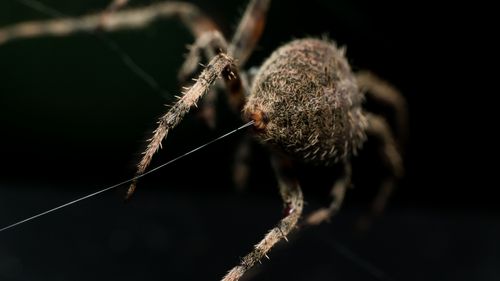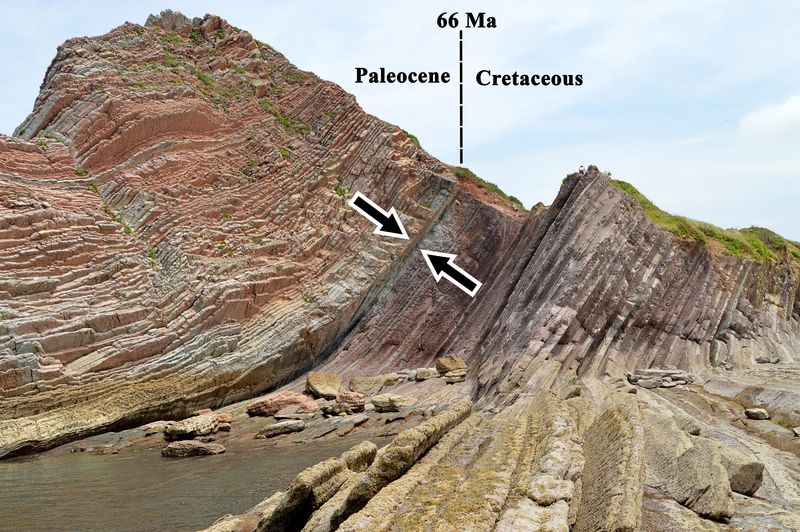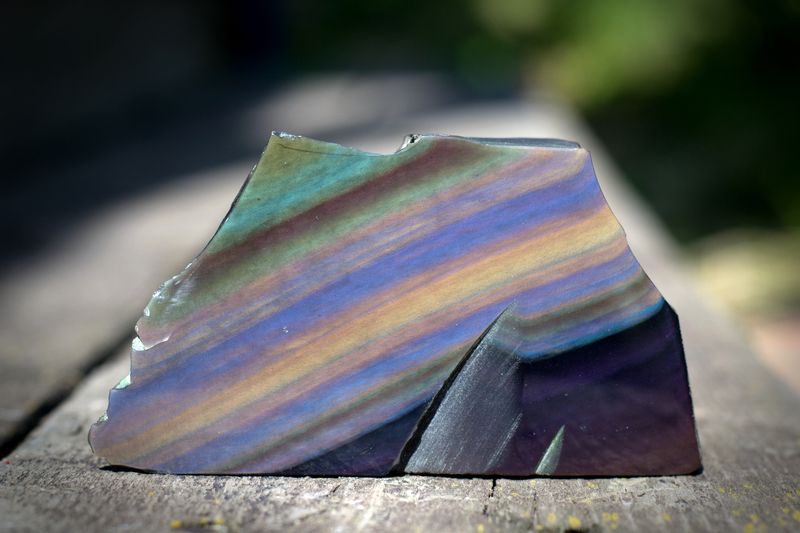Five times stronger than a steel cable of the same weight yet also soft and flexible, spider silk is one of the most incredible materials on Earth. So naturally, scientists have been trying to unravel its structural secrets for many years, with the ultimate aim of developing a mass-producible arachnid fiber dupe.
And now, researchers at the Department of Applied Science at William & Mary are one step closer to that goal thanks to a surprising discovery made during their ongoing study of brown recluse spider silk.
"We were expecting to find that the fiber was a single mass," team leader Hannes Schniepp said in a statement. "But what we found was that the silk was actually a kind of tiny cable."
“It turns out that the fiber is made of a number of nanostrands," Schniepp continued. "Each nanostrand is a thin thread made of protein, less than a millionth of an inch in diameter."
This insight came after Schniepp and his graduate student, Qijue Wong, used atomic force microscopy – an extremely high-resolution type of scanning probe microscopy – to examine the strands on a molecular level. In the paper detailing their findings, published in ACS Macro Letters, the duo note that all the remarkable properties of the silk come from the structure and arrangement of these nanostrands, also called nanofibrils.
The imaging revealed that one brown recluse silk filament is made of approximately 2,500 linguine noodle-shaped nanofibrils, each 20 nanometers in diameter and more than 1 micron long, that are layered in parallel stacks, not twisted or braided as some previous models of spider silk have suggested.
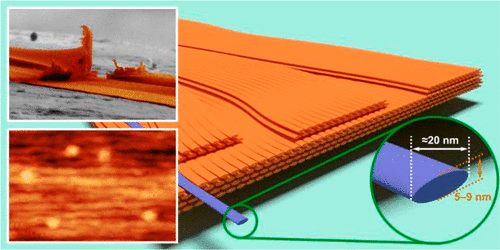
“However, in the absence of unambiguous experimental evidence, competing and incompatible structural models of natural silk fibers have been proposed… [W]e developed the most detailed structural model for any silk directly supported by experimental evidence,” Schniepp and Wong wrote. Based on their findings that the layers actually break apart quite easily, the duo theorizes that the brown recluse silk’s strength comes from the length of the nanofibrils, not the bonds between them.
“Our work underlines the importance of nanofibrils and furthers the understanding of the structure-property relationships of silk, with wide-ranging implications for silk research and the design of silk-inspired high-performance materials."
Mohan Srinivasarao, a program director at the National Science Foundation (who contributed toward the research funding) explained that understanding “the reasons why spider silk has increased mechanical toughness compared to insect silks has been a primary motivator for a number of studies, as well as the desire to produce large quantities of spider silk synthetically in the laboratory.”
“From this perspective, the results being reported provide an interesting clue to the 'tricks of the trade' that nature has in producing amazing materials," he said.
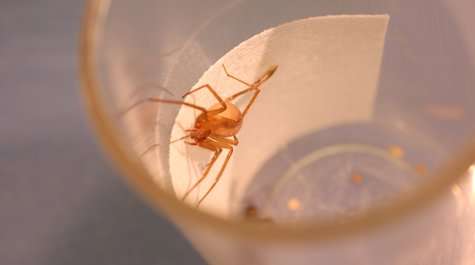
One of 100 or so venomous brown recluse spiders being studied in the Integrated Science Center lab of Hannes Schniepp. Credit: Stephen Salpukas

